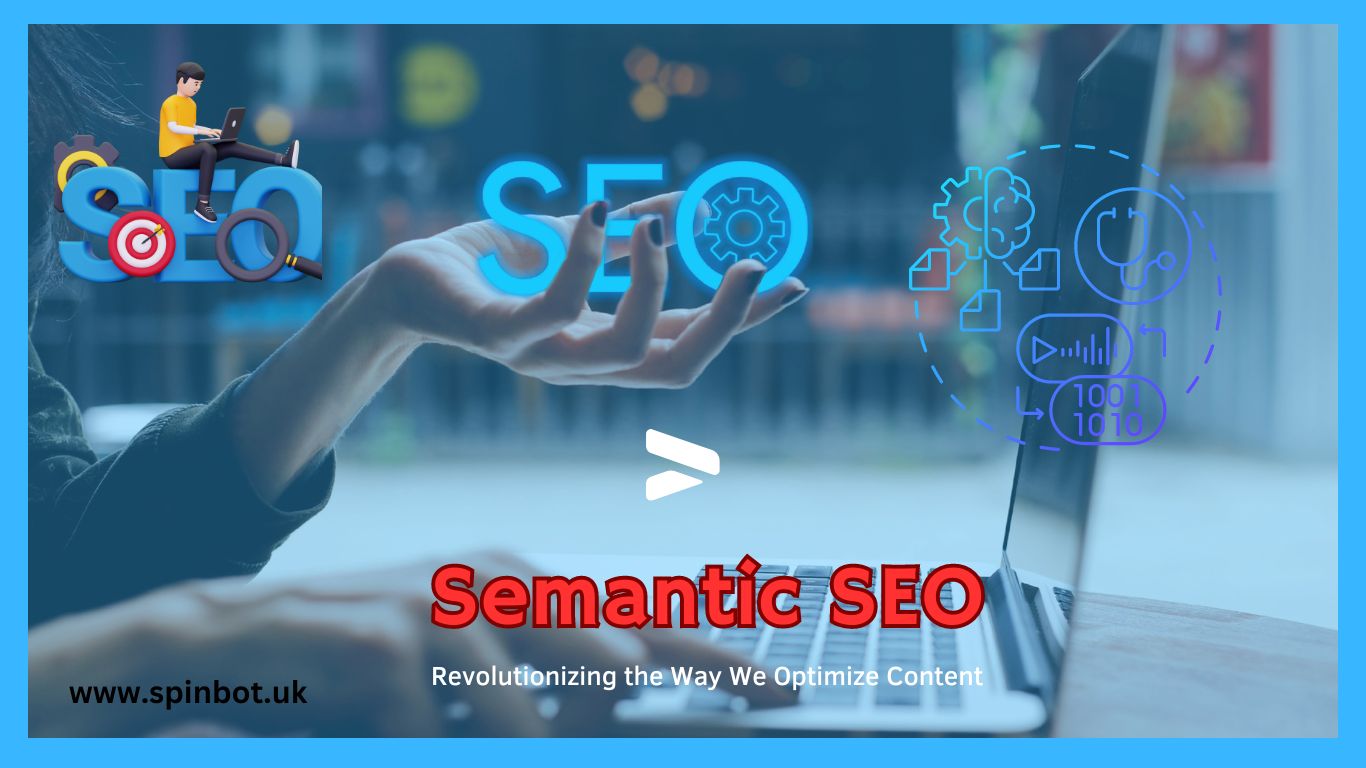
In today’s digital age, understanding Semantic SEO is crucial for enhancing online visibility. This approach focuses on the meaning and context of content, rather than just keywords. It’s about providing comprehensive answers to user queries, considering their intent. By embracing Semantic SEO, you can improve your website’s relevance and ranking in search engine results, ultimately driving more organic traffic and ensuring a better user experience. In this article, we’ll explore the differences between Semantic SEO and traditional SEO, the importance of semantic keywords, and how to implement effective Semantic SEO strategies.
What is Semantic SEO?
Semantic SEO is a holistic approach to search engine optimization that goes beyond traditional keyword usage. It involves optimizing content to ensure that it comprehensively answers the user’s query, considering the context and intent behind the search. This method is about understanding the relationships between concepts and the underlying meaning of content, rather than just focusing on specific keywords.
The Difference Between Semantic SEO and Traditional SEO
Traditional SEO primarily focuses on keyword density and backlinks, whereas semantic SEO is about understanding the searcher’s intent and providing content that offers a complete answer to their query. It involves using semantic keywords, which are words or phrases related to the main keyword, to provide context and depth to the content.
The Importance of Semantic Keywords for SEO
Semantic keywords play a crucial role in semantic SEO. They help search engines understand the context and relevance of content, leading to more accurate search results. By incorporating semantic keywords, you can improve your content’s chances of ranking higher in search engine results pages (SERPs).

Examples of Semantic Search
An example of a semantic search is when a user types “best Italian restaurants near me” into a search engine. The search engine will use semantic analysis to understand the user’s intent and provide results that not only include Italian restaurants but also consider the user’s location to offer the most relevant options.
Semantic search seeks to improve search accuracy by understanding the searcher’s intent and the contextual meaning of terms as they appear in the searchable dataspace, whether on the Web or within a specific database. This type of search technology considers various factors including context, user intent, query semantics, and the relationships between words, to deliver more relevant search results. Below are several examples of how semantic search can be applied across different domains to enhance information retrieval.
1. E-commerce Platforms
E-commerce sites like Amazon use semantic search to improve product discovery. When users search for products, semantic algorithms consider user intent, past search history, and natural language queries to show the most relevant products. For example, searching for “gift for 10-year-old boy who likes science” would not only focus on the keywords but also the context and intent behind the search, leading to a curated list of science-related toys or books suitable for a 10-year-old.
2. Job Search Platforms
Platforms like LinkedIn and Indeed apply semantic search to match job seekers with relevant job postings. By analyzing resumes, job descriptions, and user behavior, these platforms can understand the nuances of job titles, skills, and experiences. A search for “entry-level programming jobs” will take into account synonyms, related skills, and job titles to present a wide range of applicable listings.
3. Voice Assistants and Chatbots
Voice assistants like Siri and Alexa, as well as various chatbots, rely heavily on semantic search to interpret user requests accurately. When a user asks a question or makes a request using natural language, the assistant uses semantic search to understand the query’s context and deliver a precise answer or perform the requested action. For instance, asking “What’s the weather like outside?” is interpreted to provide the current weather based on the user’s location.
4. Academic Research Databases
Semantic search in academic databases like Google Scholar or PubMed allows researchers to find relevant papers and articles more efficiently. By understanding the context of search queries, these databases can provide results that are more aligned with the research intent, even if the exact keywords are not used in the search.
Searching for “effects of climate change on polar bears” would return results that discuss climate impact on Arctic ecosystems and polar bear populations without needing the exact phrase to be present in all the retrieved documents.
5. Social Media Platforms
Platforms such as Facebook and Twitter use semantic search to filter and personalize content feeds and search results. By analyzing the semantics of user posts, searches, and interactions, these platforms can prioritize content that is more likely to interest the user. Searching for “coffee shop recommendations” on a social media platform might return posts from friends who have mentioned coffee shops, reviews, or even locations nearby, understanding the user’s intent to find a good coffee shop.
6. Customer Support Knowledge Bases
Semantic search enhances the effectiveness of customer support by providing more accurate answers to user queries in knowledge bases and FAQs. Instead of relying on exact keyword matches, semantic search understands the meaning behind a customer’s question, allowing for the retrieval of the most relevant solution articles, even if the customer’s phrasing doesn’t exactly match the knowledge base documentation.
By moving beyond simple keyword matching to understand the intent and context behind queries, semantic search technologies offer a more intuitive, efficient, and accurate way to retrieve information. As natural language processing and machine learning technologies continue to evolve, the capabilities and applications of semantic search are expected to expan
Understanding the Semantic Web
The Semantic Web is a concept that aims to create a more interconnected and intelligent internet, where data is linked and structured in a way that can be easily understood by machines. This enhances the ability of search engines to provide more relevant and accurate search results.
Is Google a Semantic Website?
Yes, Google has been incorporating semantic search principles into its algorithms for years. It uses natural language processing and machine learning to understand the context and intent behind search queries, providing users with more accurate and relevant results.
Implementing Semantic SEO Strategies
To effectively implement semantic SEO, focus on creating content that is comprehensive, informative, and answers the user’s query in depth. Use semantic keywords naturally throughout your content, and structure your articles with clear headings and subheadings for better readability and SEO.
In conclusion, semantic SEO is a forward-thinking approach that focuses on the meaning and intent behind content, rather than just keywords. By adopting semantic SEO strategies, you can improve your website’s visibility and relevance in search engine results, ultimately leading to more organic traffic and a better user experience.
For more insights into optimizing your content and enhancing your online presence, visit Spinbot, your go-to resource for article rewriting and content generation tools.

Rishi Sunak, experienced blogger & WordPress developer, excels in digital marketing & SEO. Delivers high-quality content at https://blog.spinbot.uk/, enhancing online visibility & earning potential.